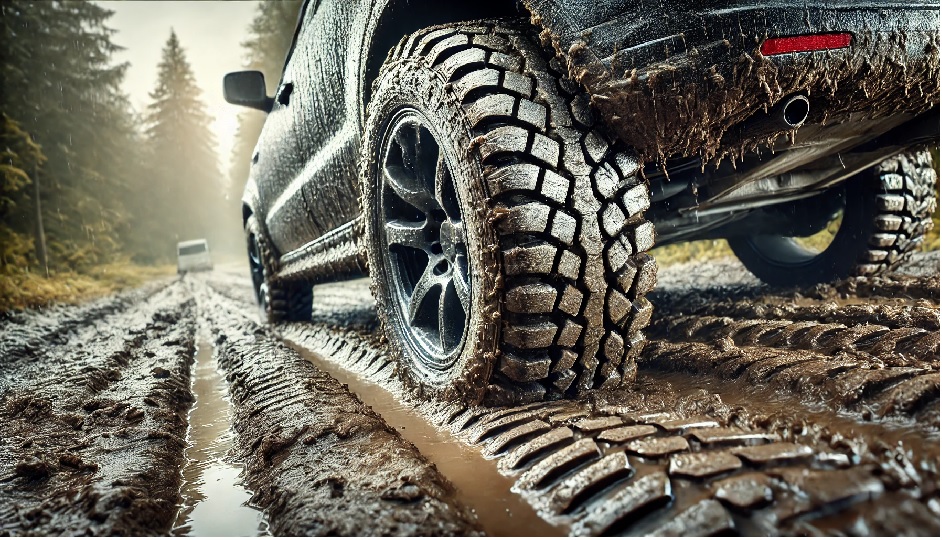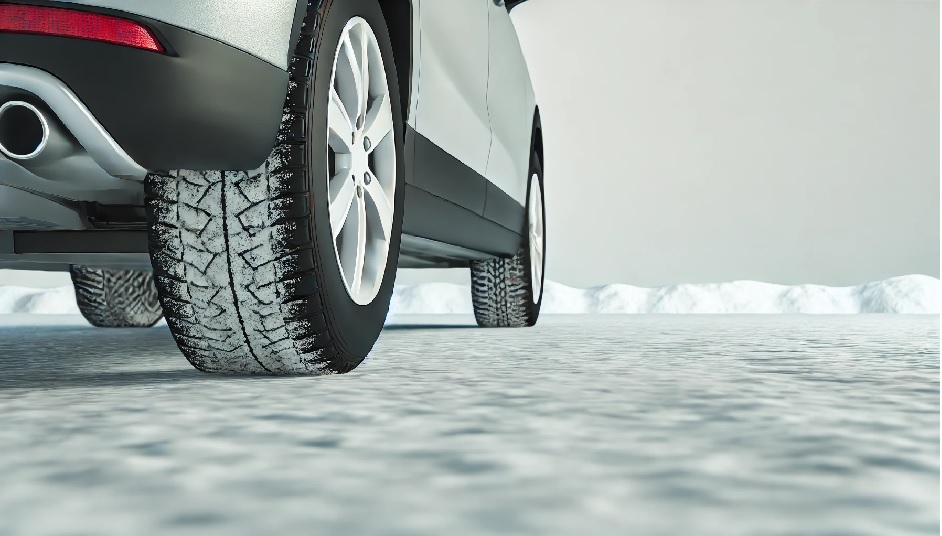Drivers face special challenges in winter. We can all agree on that. Snow, ice and wet conditions make the roads unsafe, especially at this time of year, and require special precautions.
The right type of tyre is a decisive factor for driving safety, as it has a significant influence on braking distances. Here you can find out why winter tyres are essential in winter and how they can increase driving safety.
Why winter tyres are crucial for safety
Winter tyres are specially developed for cold temperatures and difficult road conditions. Their special rubber compound remains flexible even at low temperatures. As a result, they offer better grip on winter roads. Without this flexibility and the special tread, the braking distance on slippery or wet roads would be significantly longer. So it's no wonder that these tyres are required by law.
How winter tyres shorten braking distances
Winter tyres can significantly reduce braking distances on snow and ice compared to summer or all-season tyres. This is due to the mixture of softer rubber and the special tread pattern, which ensures maximum grip. Winter tyres offer much better grip on slippery or wet surfaces. This shortens the braking distance and reduces the risk of an accident.
Comparison: Braking distances with summer, all-season and winter tyres
A comparison shows that summer tyres perform significantly worse in winter conditions. We are all aware of this fact. While winter tyres come to a standstill after about 30 metres at a speed of 50 km/h on snow, summer tyres often need twice as much distance. All-season tyres, on the other hand, are somewhere in between, but do not offer the same level of safety as specially developed winter tyres. It is therefore advisable to use winter tyres in winter. This is the only way to ensure maximum safety.
Optimum car care thanks to customised floor mats
In addition to the right car tyres, a clean car interior, especially the vehicle floor, also plays an important role in winter. Discover at doormat pro High-quality, custom-fit car floor mats that have been specially developed for optimum protection. Available in 3D and 5D shapes, the all-weather floor mats impress with their excellent slip resistance.
With a reinforced pedal zone, centre tunnel cover, extra high edges and perfect grip, these car floor mats offer comprehensive protection and actively contribute to the care of your vehicle. Certified multiple times, they guarantee maximum reliability, especially in winter. Complete floor coverage, easy installation and first-class material quality make these car accessories particularly valuable.
Starting from Audi floor mats from Mercedes floor mats to Volvo Floor Mats you will find custom-fit floor mats in top quality.
Winter tyre tread: depth and structure for maximum grip
The tread of winter tyres is designed to drain snow, mud and water in a targeted manner. The tread depth should be at least 4 millimetres. This ensures optimum grip. Worn winter tyres with a shallow tread depth do not offer the same grip and should therefore be replaced in good time.
Tyre pressure in winter: What you should look out for
Cold temperatures cause tyre pressure to drop. It is therefore advisable to check the tyre pressure regularly. Tyre pressure that is too low often reduces grip and leads to longer braking distances. Tyre wear also increases with incorrect tyre pressure. A monthly check, on the other hand, ensures that the tyres are always at the optimum pressure.
Legal requirements and recommendations for winter tyres
In Germany, there is a situational winter tyre obligation, i.e. winter tread tyres are required by law in slippery conditions, snow and ice. The minimum tread depth is 1.6 millimetres, but a tread depth of at least 4 millimetres is recommended in order to benefit from optimum performance. Many other European countries also have specific winter tyre regulations that must be observed when driving abroad.
The right time to change winter tyres
The rule of thumb is "O to O". This means that winter tyres should be used from October to Easter. So don't wait until the first snow falls, but change your tyres early and be prepared for sudden changes in the weather. Winter tyres already offer better grip at temperatures below 7 degrees Celsius and should therefore be fitted in good time.
Care and storage of winter tyres
Proper care is important to extend the service life of winter tyres. Therefore, clean the tyres regularly to remove dirt and salt. After the winter, store them in a dry, cool place away from sunlight. Stack the tyres without rims on top of each other or hang them up on a bracket. This will ensure that the tyres retain their shape and are optimally prepared for the next winter use.
Additional tips for safe driving in winter
In addition to the right tyres, an adapted driving style is of course important. Keep a greater distance from the vehicle in front. Braking distances can be longer in winter, even with winter tyres. In extreme conditions such as snow and ice, snow chains can provide additional grip. A gentle and anticipatory driving style also helps to get through the winter safely.



